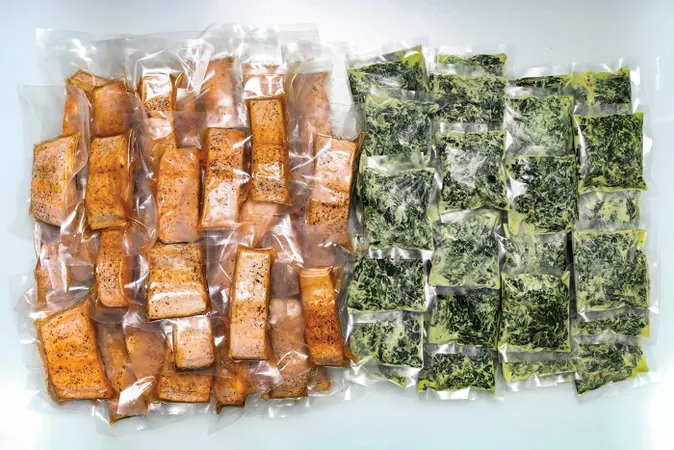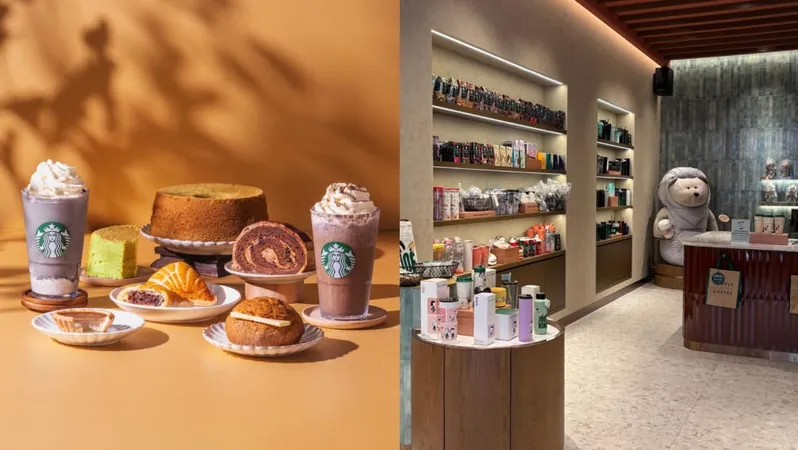
Shocking Discovery: Silver in Antimicrobial Packaging Seeping into Your Food!
2025-01-21
Author: Arjun
Recent Studies Unveil Startling News
Recent studies have unveiled startling news that could change the way we think about food safety. Antimicrobial packaging, often hailed as a game-changer for extending shelf life and reducing food waste, may harbor hidden dangers. This comes amid growing concerns over the use of silver nanoparticles in plastic food packaging, which remains unapproved in both the United States and Europe.
Leaching of Silver Nanoparticles
Research has now shown that silver nanoparticles—widely recognized for their antibacterial properties—can leach into the very food we're consuming. The study, published in *ACS Food Science & Technology*, highlights that this leaching phenomenon poses a potential health risk that demands attention.
Historical Context and Current Concerns
Silver has been celebrated for its disinfecting qualities for centuries, yet the recent clamor from advocacy groups is hard to ignore. They warn that the long-term effects of exposure to engineered nanosilver are still poorly understood, leading scientists and researchers to tread carefully. Timothy Duncan, a research scientist at the US Food and Drug Administration, spearheaded this investigation to determine whether these nanoparticles remain securely contained within food packaging.
Surprising Findings of the Research
In a surprising twist, Duncan and his team—who previously uncovered the leaking of silver into beverages—discovered silver contamination across various food items. The researchers crafted their own nanoparticle-embedded polyethylene films and tested them with items like cheese, wheat flour, spinach, and rice. They placed these items under various storage conditions that simulated both short and long-term refrigeration.
What they found was unexpected. After conducting advanced analysis using inductively coupled plasma mass spectrometry, all food items exhibited varying levels of silver contamination. The leakage was primarily influenced by the contact area between the food and packaging; for example, finely ground rice absorbed more silver than coarsely ground rice, and cheese, with its broader surface area, saw higher levels of contamination compared to flour.
Implications of Silver Contamination
Although the concentrations of silver detected were relatively low, the implications of such findings are significant. Katrin Löschner, an analytical food chemist from the Technical University of Denmark, emphasized that while there are currently no safety concerns identified by the European Food Safety Authority for packaging containing nanosilver in minimal amounts, the risk of long-term exposure to higher concentrations is not to be overlooked.
The Reality of Silver Presence on Food
The silver tends to remain on the surface of the food, and while washing can reduce its presence, it does not eliminate it entirely. This raises more questions about the safety and regulatory standards of antimicrobial packaging and its viability for food use.
Reconsidering Antimicrobial Technologies
In light of these discoveries, consumers may need to rethink their reliance on such innovations. Is the convenience of extended shelf life worth the potential risk? As the debate heats up around the safety of antimicrobial technologies in food packaging, further studies are certainly warranted. The food industry may face growing scrutiny as scientists and health advocates strive for a deeper understanding of the long-term implications of nanosilver exposure. The safety of what we eat is at stake—it might be time to reconsider how we package our food!

 Brasil (PT)
Brasil (PT)
 Canada (EN)
Canada (EN)
 Chile (ES)
Chile (ES)
 Česko (CS)
Česko (CS)
 대한민국 (KO)
대한민국 (KO)
 España (ES)
España (ES)
 France (FR)
France (FR)
 Hong Kong (EN)
Hong Kong (EN)
 Italia (IT)
Italia (IT)
 日本 (JA)
日本 (JA)
 Magyarország (HU)
Magyarország (HU)
 Norge (NO)
Norge (NO)
 Polska (PL)
Polska (PL)
 Schweiz (DE)
Schweiz (DE)
 Singapore (EN)
Singapore (EN)
 Sverige (SV)
Sverige (SV)
 Suomi (FI)
Suomi (FI)
 Türkiye (TR)
Türkiye (TR)
 الإمارات العربية المتحدة (AR)
الإمارات العربية المتحدة (AR)